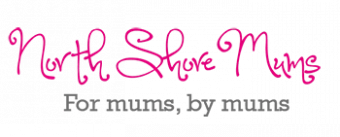There’s a common mindset that soon after your baby has been safely delivered, your body will be free of all the aches and pains you experienced during your pregnancy and you’ll soon be back to how you were before. You then launch energetically into fitness to get back into shape – push-ups, sit-ups, planks, burpies, lunges … sounds familiar, right? Sorry mums, it doesn’t always work out like this, writes NSM and sports physiotherapist Liane Shatrov.
Many women suffer postnatal injuries, aches and pains. Such problems may have bothered you during your pregnancy, or may in fact just be completely new to you. And they may include back and neck pain, headaches, knee pain (particularly knee cap tracking issues), hip issues (such as clicking in the hips and hip pain), ankle sprains, shin splints and stress fractures. And let’s not overlook incontinence issues, either.
Below are the most common reasons we get postnatal injuries.
New activities. After having a baby, you are thrown into doing activities you wouldn’t have done previously.
Physically demanding movements. Some of these new activities are physically demanding. This includes lifting the pram in and out of the car, bending over the bath for bath time, carrying your baby, and so on.
Returning to exercise too quickly. The buzzword to become familiar with and that sports physios use is ‘load’. As in training loads. Mums are beautifully determined, but being guided through how to gradually ease the body back into exercise is something that shouldn’t be overlooked.
Poor timing. There are so many changes that have happened to your body during pregnancy and it needs time to recover. Carefully timing what exercise to introduce can help to prevent injury. For example, one significant change to your body during pregnancy is decreased bone mineral density. This means you need to be especially careful and not be too quick to introduce high-impact exercise such as burpies, jumping lunges and running. Otherwise this could lead to a stress fracture!
Lack of strength. Ultimately, the most important reason for postnatal injuries is not having the correct strength in the correct places. It really isn’t about starting with planks, sit-ups and lunges (shock, horror!).
Top 4 ways to prevent postnatal injuries
1. Educate yourself
Since life gets busy with children, you need to optimise the little spare time you do have to exercise. This can be achieved by learning about what exercise is best for you and when to introduce it.
For example, did you know that there are two main muscle groups – your inner core and outer core – that you need to strengthen during the postnatal period? Both muscle groups require very different types of exercise.
2. Build the foundations
Learn how to activate your inner core before you work on strengthening the outer muscles. This will ensure you are developing your strength from the inside out, to help build a solid framework for your body. The deep muscles include your deep core, pelvic floor and buttocks muscles.
The deep core muscles are different to your sixpack muscles. You actually aren’t focusing on these muscles when you do sit-ups! Get expert guidance to ensure you are activating these muscles correctly.
The pelvic floor is like a hammock. When weight is placed on it, it stretches. This is what happens during pregnancy and it is so important to regain pelvic floor activation over the postnatal period.
The buttocks muscles are important to give your pelvis stability and support your spine. Plus, toning your buttocks can help you look trim and terrific!
3. Work on the finishing touches
When the groundwork is done with deep core activation, you can then introduce exercises, such as sit ups, to rebuild general body strength in the outer core muscles.
4. Monitor the intensity
It is all about the load. Build up your exercise using the 10 per cent rule, where you should only increase your exercise by a maximum of 10 per cent each week. For example, if after your first couple of 20-minute runs you felt great, don’t try and run for 45 minutes the next time. In other words, don’t try to introduce high-impact and high-intensity exercise too soon.
The best way to prevent postnatal injuries and manage incontinence, is to restore the correct strength in the correct places in the correct sequence. Before you know it, you will be exercising pain free again, and there is no better feeling!
For more information on how to improve your posture and core strength, visit Physiotonic. You can also enjoy a FREE trial Mums & Bubs class in a friendly environment, meet other mums and restore pre-pregnancy fitness under the expert guidance of highly trained physiotherapists. Simply contact sports physiotherapist Liane Shatrov on [email protected]
Have you suffered from postnatal injuries? We’d like to know what caused them, and if you had to seek professional help to overcome them, in the comments section below.
More on postnatal health…













